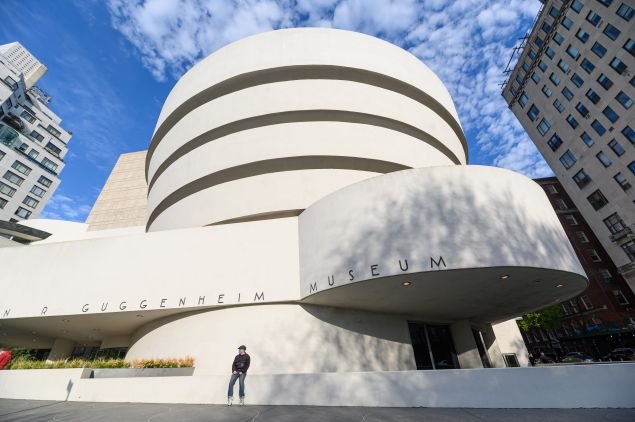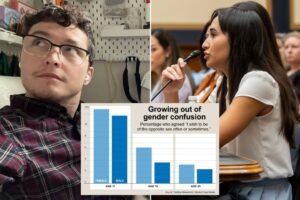
[ad_1]
Once, art museums felt like a place to get away from all the chaos and confusion of everyday life—a place to enjoy beauty and consider eternal questions of life in a curated, contemplative and quiet environment. The beauty and the questions it raises are still there for the enjoying, but museums have, as of late, become a focal point of the anger, resentment, divisiveness and demand for change raging just outside institutional walls.


This year has been transformative in more ways than one. Full of landmark exhibitions like the Rijksmuseum Vermeer show, 2023 also forced the art world to reckon with questions of ownership, censorship, accessibility and how to keep institutions above
In February, an art exhibition organized by the nonprofit group Embracing Our Differences that was to take place on the Manatee-Sarasota campus of the State College of Florida was canceled after university officials told the Sarasota-based nonprofit to remove the words “diversity,” “justice,” “equality” and “inclusion” from any promotional materials and wall text. School officials claimed that the words could inspire violence or trigger post-traumatic stress disorder among student-veterans. Others theorized that Governor Ron DeSantis’ recently announced funding cuts to state universities’ diversity, equity and inclusion programs were the real impetus. “We are not a political organization with a political agenda,” a statement from Embracing Our Differences claimed, but terms that might be widely accepted as positive in a mature democracy have become another flashpoint in the ongoing culture wars.
Some museums took steps in the opposite direction this year. The San Francisco Museum of Modern Art made diversity, equity and inclusion key elements of its acquisition strategy, focusing on artists with connections to the Bay Area, artists in the LGBTQIA+ community, women artists, disabled artists and artists of color. Over 200 works accessed in 2023 are part of that collecting priority, including Marcel Pardo Ariza’s “I Am Very Lucky, Very Lucky to be Trans” (2022) and An-My Lê’s “Fragment VII: High School Students Protesting Gun Violence, Washington Square Park, New York” (2018/2020). Christopher Bedford became director of SF MoMA in 2022, right after leaving the directorship of the Baltimore Museum of Art where he had been a take-no-prisoners proponent of making the institution an instrument of social change.
He’s not alone. Many museum leaders prioritized selling off, or deaccessioning, artworks by white male artists to purchase pieces by members of underrepresented groups in 2023. And several other U.S. art museums have also sought to increase their holdings in works by artists who have traditionally been underrepresented in museum collections. The Smithsonian Institution’s National Gallery of Art this year acquired two photographs by Dread Scott (“I Am Not A Man,” 2009, and “On the Impossibility of Freedom in a Country Founded on Slavery and Genocide,” 2014), thanks to financial assistance from Michael Findlay and Victoria Findlay Wolfe; a 1972 painting by Sam Gilliam (“Yellow Edge”), a gift from Elinor K. Farquhar; and a painting by Charles White (“I Accuse,” c. 1950) funded by the museum’s Patrons’ Permanent Fund with additional support of P. Bruce Marine and Donald Hardy.
The Baltimore Museum of Art added more than 100 pieces to its permanent collection, almost all of which were by African-American and African diasporic artists, including John Henry Adams Jr., Edward Mitchell Bannister, Eldzier Cortor, Viyé Diba, David Driskell, John Farrar, Kojo Griffin, Seydou Keïta, Joe Overstreet, Charles Ethan Porter, Laura Wheeler Waring, Charles White and Philemona Williamson, while the nearby Walters Art Museum acquired a stained-glass work by Kehinde Wiley (“Saint Amelie,” 2014).


Other museums looked toward different underrepresented groups. In Michigan, the Detroit Institute of Art added works by five women artists—specifically, Angelica Kauffman, Félicie de Fauveau, Artis Lane, Julie Mehretu and Deborah Roberts—to its permanent collection in 2023 as part of its efforts to increase the visibility of women in the arts. And the Shelburne Museum in Vermont received a collection of more than 200 items of Native American art, consisting of late 19th- and early 20th-century pottery, beadwork, clothing and weavings predominantly from Plains and Southwest communities as a gift from Teri Perry, who with her husband Tony Perry built the collection over decades. The museum plans to showcase the sundry art and artifacts in a new building: the Perry Center for Native American Art.
The acquisition and display of Native American artifacts has long been contentious, but this year, institutions began to proactively respond to criticism. In January, independent nonprofit news organization ProPublica released a report that identified the remains of more than 110,000 Native Americans housed in over 600 museums across the country, with ten holding more than half. The University of California at Berkeley has the most, with 9,075 remains, followed by the Illinois State Museum (7,590), Harvard University’s Peabody Museum (6,165) and New York’s American Museum of Natural History (1,898). Efforts at repatriating the remains and other Native American objects to the tribes from which they came were expedited by the publicity, with UC Berkeley announcing in early November plans to return 4,400 ancestral remains and more than 25,000 other items, including jewelry, shells, beads and baskets.
This was an all-around interesting year for those following repatriation news. In October, the Metropolitan Museum of Art returned to Nepal two sculptures taken from temples (one was a gift, the other a purchase), while Princeton University’s art museum sent ten artifacts of Greek or Etruscan origin to Italy while Emory University’s museum sent five ancient ceramics. In both cases, the objects were tied to known antiquities traffickers. The Cleveland Museum of Art returned a bronze bust of Marcus Aurelius to Turkey, while the Worcester Art Museum sent a bronze bust assumed to be of the daughter of Marcus Aurelius. The Menil Collection in Houston and the Chrysler Museum in Norfolk, Virginia were among the other U.S. institutions ordered to return improperly acquired art and artifacts this year.
The year also brought with it a changing of the guard at several major museums. When Adam Weinberg stepped down as director of the Whitney Museum of American Art, the institution chose the museum’s current senior deputy director and chief curator Scott Rothkopf to replace him. A more fraught search took place at the Indianapolis Museum of Art, which in 2021 advertised its directorship vacancy by stating that the chosen applicant would need to maintain the institution’s “traditional, core, white audience” while also increasing diversity. Wiping egg off its face, Newfields, the organization overseeing the art museum as well as several other institutions on its campus, finally found a taker in African-American candidate Belinda Tate, the director of Michigan’s Kalamazoo Institute of Arts since 2014.
Navigating race was no easier for the New Orleans Museum of Art, which faced an outcry after hiring Amanda M. Maples, a white woman, as curator of African art. The selection did not call into question Maples’ qualifications or experience but rather whether or not equally qualified African-American candidates had been considered and if a white person could relate to the African and African-American experience.
Many museums around the U.S. did recognize the need to make more of an effort to engage with minority communities and increase diversity internally. Some hired a new type of director to help accomplish those goals: the Director of Interpretation. The Wadsworth Atheneum in Hartford, Connecticut filled a newly-created position of program manager for the African Diaspora by hiring Bethani Blake, while the Phoenix Art Museum picked Giovana Aviles to serve as its inaugural curator of engagement. The San Francisco Museum of Modern Art tapped Gamynne Guillotte to be the next chief education and community engagement officer, responsible for connecting with a wider range of audiences through educational and public programs.


Museums faced continuing financial woes this year, leaving many institutions searching for new ways to increase attendance and revenue while lowering expenses. Major art museums—including the Art Institute of Chicago, Guggenheim Museum, Museum of Modern Art, Philadelphia Museum of Art, San Francisco Museum of Modern Art and the Whitney—raised general admission fees to $30, making clear that as much as the talk centers on reaching new, less well-heeled populations, their target audience is still the wealthy and, in urban centers, tourists. Perhaps the largest single donation to a museum in 2023 was the $1.9 billion that reclusive billionaire art collector Mitchell Rales donated to his Glenstone Foundation, which supports the Glenstone Museum in Potomac, Maryland. The largest return of cash was the $550,000 that the Metropolitan Museum sent back to FTX, the high-profile cryptocurrency exchange that went bankrupt the year prior.
New museums come into existence and others close for good every year, while yet others announce plans for expansion (and the inevitable capital campaign). This year was no exception, though it’s worth noting that in 2023, two planned museums were nixed before building began. Republican members of Congress, many of whom were of Latino descent, led the effort that successfully blocked funding for a proposed new Smithsonian museum on the National Mall: the National Museum of the American Latino. Opponents of the new museum criticized the initiative as presenting a view of Latinos as victims of American oppression. And the high cost of building a museum and the lack of adequate fundraising led proponents of constructing an Orlando Museum to honor the victims of the Pulse nightclub shooting in 2016 to give up on the project. At the same time, the Frick Collection entered the public phase of the institution’s expansion-focused capital campaign, gearing up for transition from its temporary home in the Breuer building back to its home in the residence of industrialist Henry Clay Frick.
And finally, in the category of “What are WE supposed to do about it?”, museums faced regular threats of violence and continued showers of soup. Climate change protesters at the National Gallery of Art in Washington, D.C., the National Museum in Stockholm, Sweden, the Leopold Museum in Vienna and the British Museum in London, to name but a few, have thrown paint and food at artworks in these institutions, sometimes also gluing their hands to the picture frames. In September, after hearing of a planned action by these protesters, the Isabella Stewart Gardner Museum in Boston took the logical step of closing for the day so that officials wouldn’t have to deal with the mess. More worrisome was the evacuation of the Louvre Museum in Paris in October after the institution received a bomb threat.
Is this the new normal for art museums in the United States and elsewhere? Only 2024 will tell.
[ad_2]
Source link






